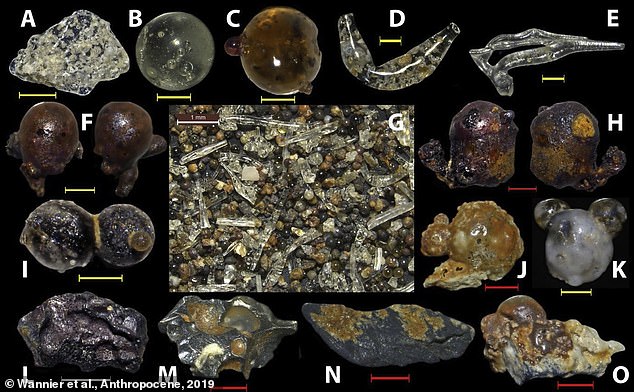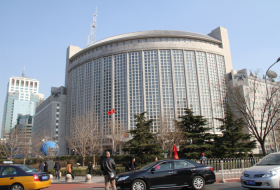They were formed during the atomic bombing which destroyed the city of Hiroshima when 'Little Boy' was dropped by the US Air Force and detonated with the equivalent force of 15 kilotons of TNT.
The teardrop-shaped beads were created as the city was annihilated and made from the vaporised rubble of Hiroshima itself.
It caused such destruction that the remains were thrown into a superheated cloud that later rained the condensed matter down on the peninsula, where it cooled and sits to this day.
A scientific paper explains how retired geologist and marine ecologist Mario Wannier found the so-called Hiroshimaites littering the beaches around the razed city.
They reminded the experienced scientist of previous samples of rock which were formed 66 million years ago when an enormous meteorite collided with Earth and wiped out the dinosaurs.
He believed they were formed by a huge amount of energy and the source of this was obvious as he was a mere 3.7 miles (six kilometres) from where the bomb landed.
More than 10,000 samples were collected by Mr Wannier and sent to researchers at the Berkeley Lab and UC Berkeley for analysis via electron microscopy and X-ray analysis.
It was published in the journal Anthropocene and say the Hiroshima bombing is the only 'coherent explanation'.
Most of the city was instantly obliterated when the bomb was released on May 6 1945, the second and last ever atomic bomb used in war, after the Nagasaki event.
It is believed 70,00 people died instantly, followed by approximately a quarter of a million others in the fallout from the bombing due to the radiation and injuries.
'This was the worst manmade event ever, by far,' Mr Wannier said in a statement.
'In the surprise of finding these particles, the big question for me was: You have a city, and a minute later you have no city.
Most of the city was instantly obliterated when the bomb was released on May 6 1945, the second and last ever atomic bomb used in war, after the Nagasaki event
'There was the question of: 'Where is the city – where is the material?' It is a trove to have discovered these particles. It is an incredible story.'
They contained a host of elements and chemicals unusual in such formations, such as aluminium, steel and iron.
'Some of these look similar to what we have from meteorite impacts, but the composition is quite different,' explained co-author Rudy Wenk, a professor of mineralogy at UC Berkeley.
'There were quite unusual shapes. There was some pure iron and steel. Some of these had the composition of building materials.'
Daily Mail
More about: glass
















































